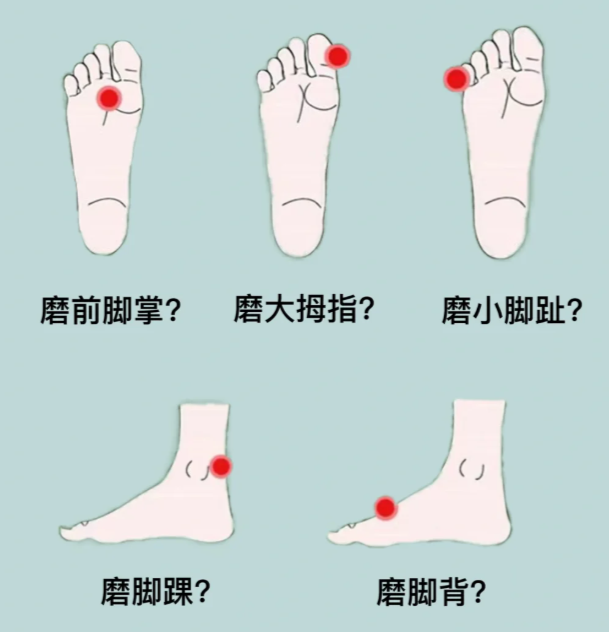How to make newly bought shoes not rub your feet?
Reading times:5 Update time:2025-06-27
###1. Preventive measures (pay attention when buying shoes)**
1. * * Choose the right size and style**
-Try on shoes in the afternoon or evening when your feet are slightly swollen, ensuring that there is enough space for movement in the forefoot and toes, and that the heel does not slide.
-Avoid choosing shoe shapes with hard materials (such as untreated leather) or designs that are too narrow.
2. * * Check the craftsmanship of the shoes**
-Prioritize choosing shoes with smooth inner stitching and no protruding seams, especially for the ankle and toe areas.
---
###2. New shoe handling techniques (before wearing)**
1. * * Softening material**
-Alcohol+Cotton Ball Method: Soak a cotton ball in alcohol, wipe the worn areas (such as the heel and shoe opening), and wear thick socks to support the shoes for 1 hour. Alcohol can soften the leather.
-* * Hair dryer heating * *: Use a hair dryer to blow hot air towards the ground foot to soften it, while moving the foot to shape it. After cooling, it will fit better.
2. * * Expand the shoe upper**
-Newspaper method: Fill wet newspapers into shoes, and after drying, the newspaper will expand slightly to support the shoes.
-* * Freezing method * *: Put water in a plastic bag into the shoes, freeze and expand the water, which can stretch the tight parts (suitable for cloth shoes or sports shoes).
3. * * Lubrication and anti friction**
-Apply a layer of transparent candle, soap, or moisturizer on the ground to reduce direct friction between the feet and shoes.
---
###3. Ways to Relieve When Wearing**
1. * * Protect feet**
-Use anti-wear patches/band aids: Apply them to easily worn areas such as the heel and little toe.
-Silicone protective cover: Wear toe covers or heel pads to avoid direct friction.
2. * * Adjust the way of wearing**
-At the beginning, wear new shoes for a short period of time (1-2 hours) and gradually extend the adaptation period.
-Pair with thick socks or double layered socks (thin first and thick later) to increase cushioning.
---
###4. Emergency response (worn skin)**
After cleaning the wound, cover it with a liquid band aid or sterile dressing to avoid infection.
2. Replace the old shoes and wait for the wound to heal before attempting to treat the new shoes.
---
###5. Suggestions for handling shoes made of different materials**
-* * Leather shoes/boots * *: Focus on softening leather (alcohol method, large shoe wedge support).
-* * Sports shoes * *: Priority should be given to using a hair dryer for heating or freezing adjustment.
-Canvas shoes: Wet newspaper method is more effective in avoiding hardening caused by exposure to sunlight.
---
Through the above methods, the break in period of most new shoes can be significantly shortened. If the shoes are constantly worn and cannot be improved, it may be due to the design not being suitable for the foot shape, and it is recommended to replace them.

